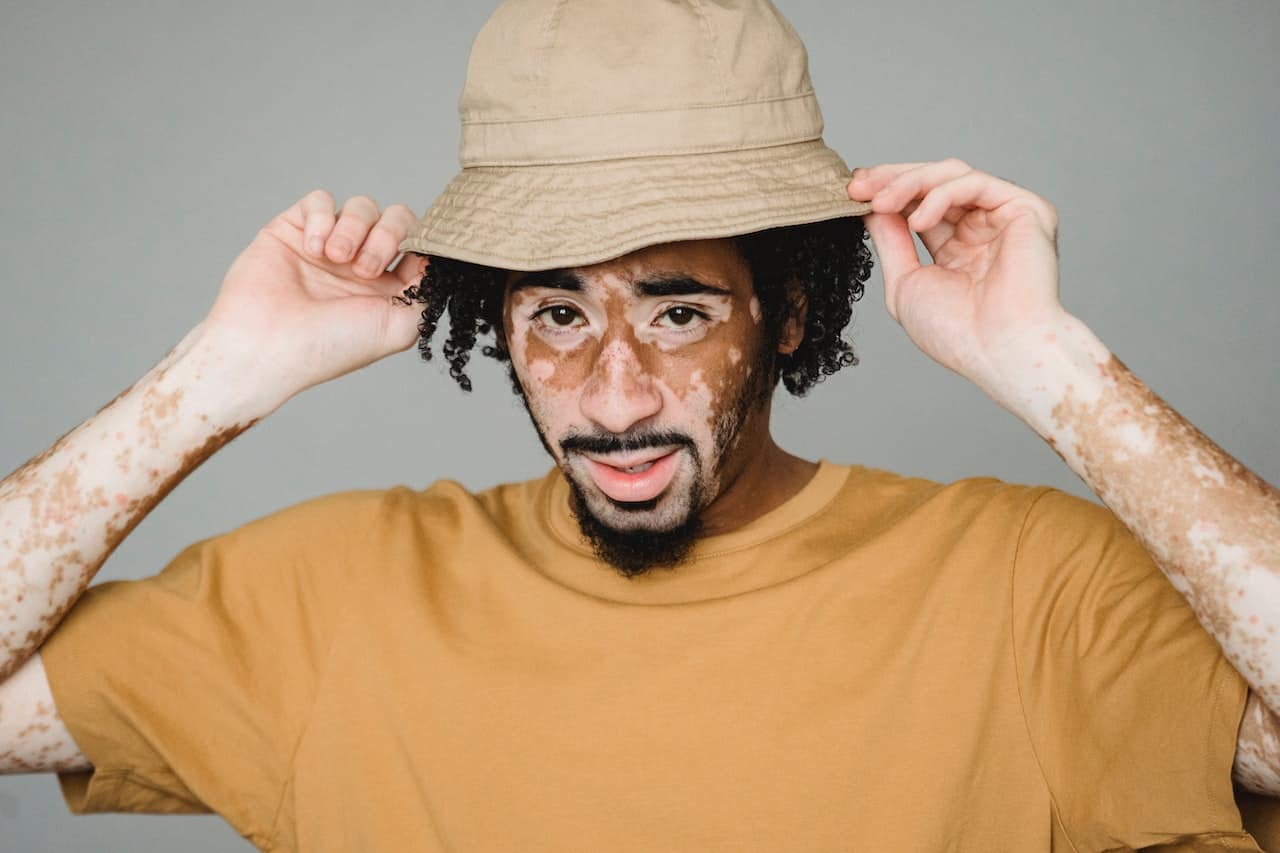Vitiligo is an autoimmune condition that causes areas of your skin to lose their natural color. Macules is the name for areas less than a centimeter, while patches refer to those larger than a centimeter.
Statistics show the prevalence of vitiligo globally is between 0.004% and 2.28%.
Become an insider. Subscribe to our newsletter for more top trending stories like this!
This condition mostly appears before age 30 and can affect people of all races. However, it’s more noticeable among people of African heritage because of the disparity between their normal skin color and the patches. As such, vitiligo in black skin affects dark-skinned people differently than white people.
Here’s all you need to know about this condition, especially if you’re black.
If you have vitiligo, pick a product from Amazon that best fits your skin.
What Causes Vitiligo in Black Skin?
Your skin color is determined by cells called melanocytes. These cells produce melanin, giving a distinct color to your skin, hair, and even eyes.
Sometimes, the immune system can mistakenly destroy or kill melanocytes. When this happens, insufficient melanin is produced, and milky white patches appear on your skin. Hence, vitiligo is defined as an autoimmune condition.
What causes the body to attack and kill melanocytes is still unknown. However, some factors put you at higher risk of developing vitiligo. They include:
Genes and Family History
Approximately 30% of people affected by vitiligo have at least one close family member with the same condition. This is proof that it can be passed down from relatives.
Moreover, according to MedlinePlus, scientists have narrowed down this condition to two genes in over 30 gene variations. These genes are NLRPI and PTPN22. If you have these gene variations, you are at high risk of developing vitiligo. The genes are also associated with inflammation and regulation of the immune system.
Autoimmune Conditions
Having autoimmune conditions also predisposes you to developing vitiligo in black skin. These conditions include Anemia, Alopecia areata, Type 1 Diabetes, Psoriasis, Thyroid disease, Lupus, and Rheumatoid Arthritis.
According to a 2020 study, autoimmune diseases are more prevalent among black people. This directly increases the chances of vitiligo in black skin amongst African Americans.
Environmental Factors
Factors like exposure to certain chemicals, excessive ultraviolet radiation, and injury to your skin can affect how melanocytes work and lead to vitiligo. These factors can also trigger the spread of vitiligo in people with it.
Stress
Physical injury, trauma or emotional stress can affect the amount of melanin your body produces.
Symptoms of Vitiligo
So, how does vitiligo in black skin begin to appear? The primary areas affected by this skin condition are body parts mostly exposed to the sun. You’ll first notice the patches or macules on your face, feet, arms, and hands. Gradually, it will spread to other body parts like your groin, genitals, fingers, wrists, and other body parts.
Other symptoms include:
- Early greying or whitening on your body hairs, including eyebrows, eyelashes, beards, and even scalp
- Loss of color on parts of your body with a mucous membrane. This includes the lining of your mouth, nose, inner ears, eyes, rectal areas, and genitals.
Read Also: Black Skin: 3 Types of Skin Tags
Types of Vitiligo
Doctors have categorized vitiligo based on where and how it appears on the body. In most cases, vitiligo in black skin and any other type of skin appears symmetrically on both sides of the body. This type of vitiligo is called Bilateral or Non-Segmental vitiligo. The other type is the Unilateral or Segmental vitiligo.
Become an insider. Subscribe to our newsletter for more top trending stories like this!
Non-Segmental Vitiligo
As afro mentioned in this condition, the patches or macules appear on both sides of the body. They appear in a start-stop cycle where the macules quickly appear and then stop for a while before starting again until the larger areas of your body are covered in the milky white patches.
There are subgroups of bilateral vitiligo:
- Generalized vitiligo– This is where the patches appear anywhere on the body with no specific size. Generalized vitiligo is the most common type.
- Localized or Focal vitiligo -This vitiligo on black skin manifests as one or a few patches on small areas of the body
- Mucosal Vitiligo is where the milky patches form around the mucus membrane like the nose and mouth.
- Acrofacial vitiligo affects mostly the face, toes, and fingers
- Universal vitiligo is where the patches are widespread, covering most body parts. However, universal vitiligo is sporadic.
Unilateral or Segmental Vitiligo
This type of vitiligo on black skin only appears on one side of the body. It could be your right arm only. It is a rare occurrence and often stops growing after the first patch.
Complications of Vitiligo
Although vitiligo isn’t life-threatening, it often can complicate your life, especially among black people. This is because vitiligo in black skin is more noticeable.
First, you may experience stress from the changing skin color. Sometimes, this stress may lead to anxiety, depression, and low self-esteem.
Additionally, for a long time, people with vitiligo have been stigmatized as the public associated it with contagious diseases like leprosy. Social stigma reduces the quality of life in an already marginalized community.
Other than that, people with vitiligo are at a higher risk of developing:
- Hearing loss
- Eye problems
- Sunburns
- Autoimmune diseases
Read Also: Top 10 African American Dermatologists in the U.S
When to See a Doctor
Vitiligo in black skin isn’t just a cosmetic issue but also a medical condition. Therefore, the best time to see a specialist is as soon as you notice the changes in your skin.
Please note that the earlier the diagnosis of the condition, the more chances you have of treating it. The doctor will diagnose you and recommend the best form of treatment.
Treatment for vitiligo in black skin is different from those with lighter skin. For example, black people will require more doses of UV therapy than patients with lighter skin.
Also, please note that there’s no cure for vitiligo. Treatment only slows down the development of patches and, sometimes, restores your skin color.
As a black person, you must care for your skin even when it’s pretty clear black doesn’t crack. Please put on that sunscreen today, and if you notice changes in your skin, see a dermatologist as soon as possible. Vitiligo can be managed.
Nearly 80% of consumers visit directories with reviews to find a local business. List your business for free in our exclusive Spotcovery Black-Owned Business Directory.
Spotcovery offers unique and fresh daily content on Black culture, lifestyle, and experiences. We talk about everything black, black people, black-owned and black-owned businesses. We also deliver authentic and relevant content that will inform, inspire and empower you! The future of black media is critical to today’s black experience! Our primary audience includes African Americans, Africans, Afro-Caribbean, and people of African heritage. Black culture is for the culture!
Become an insider. Subscribe to our newsletter for more top trending stories like this!





